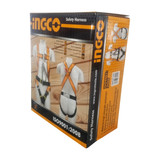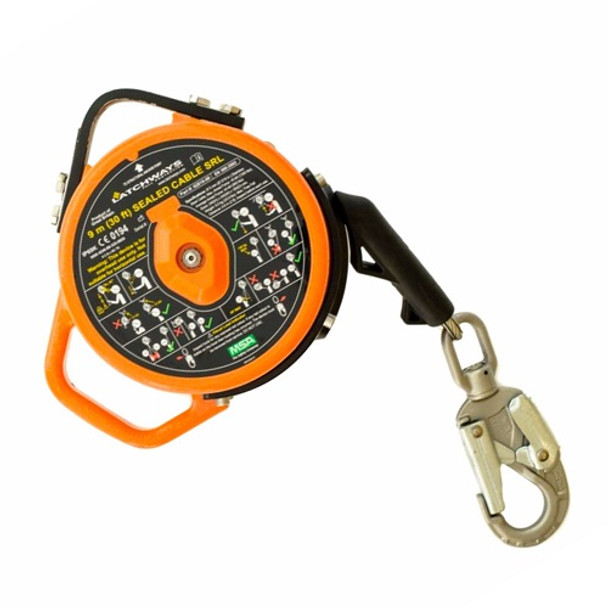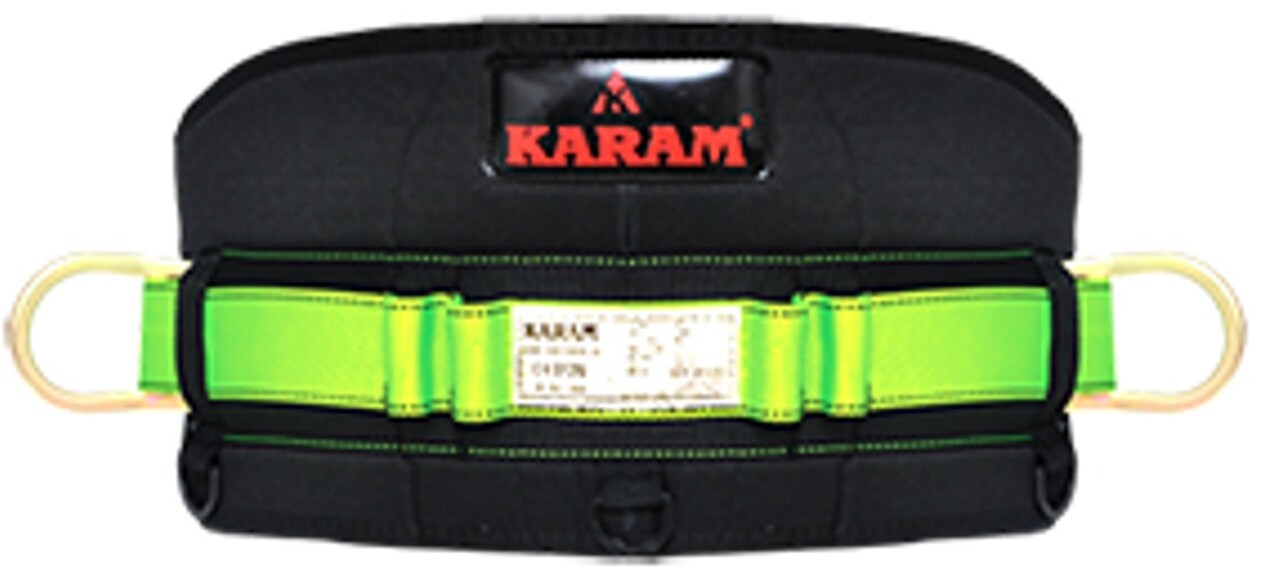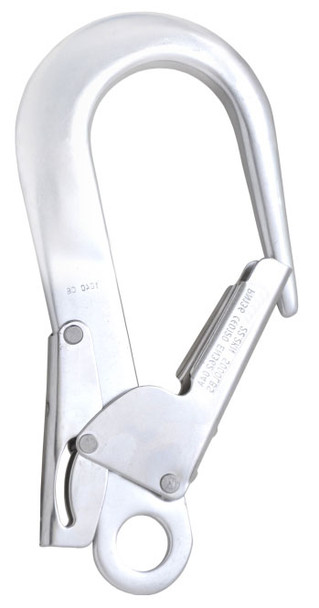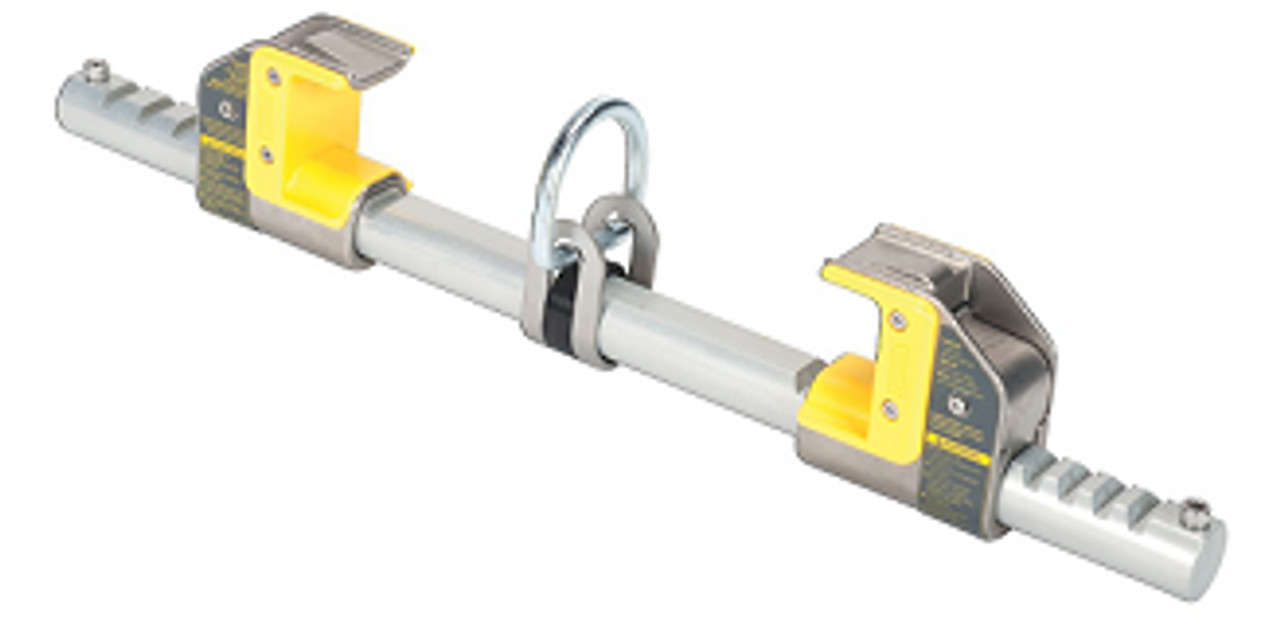Choosing the Right Fall Protection Lanyard: Types and Safety Tips
Key Takeaway
- Understand Lanyard Types: The main types of fall protection lanyards include shock-absorbing lanyards, positioning lanyards, and self-retracting lanyards. Each type serves a specific purpose, from energy absorption during falls to keeping workers in stable positions.
- Match Lanyard Type to Task: Choose the lanyard based on the work environment and specific tasks. Shock-absorbing lanyards are ideal for fall arrest in high areas, while positioning lanyards help workers maintain balance when performing tasks at heights.
- Consider the Fall Distance: Ensure the lanyard length suits the fall clearance in your workspace. For limited space, self-retracting lanyards can minimize the risk by keeping the fall distance short, reducing injury potential.
Introduction
Fall protection is a critical aspect of workplace safety, especially in industries like construction, maintenance, and warehousing. The Occupational Safety and Health Administration (OSHA) estimates that falls are the leading cause of fatalities in the construction industry. Proper use of fall protection equipment, including lanyards, is essential for preventing serious injuries or deaths.
Choosing the right fall protection lanyard is crucial for ensuring worker safety at heights, and selecting the appropriate type depends on the specific tasks and environment. Fall protection lanyards come in several varieties, including shock-absorbing lanyards for fall arrest, positioning lanyards to stabilize workers, and self-retracting lanyards that limit free-fall distance. Each type serves a unique purpose: shock-absorbing lanyards reduce impact force during falls, while self-retracting lanyards are ideal for areas with limited fall clearance.
In addition to selecting the right type, it’s essential to check the lanyard’s weight capacity, ensuring it supports the user and any tools they carry. Before use, always inspect the lanyard for wear or damage, and confirm compatibility with secure anchor points for effective fall protection. Proper training in using fall protection equipment and understanding safety protocols also play a critical role, helping workers use their lanyards correctly and confidently. By carefully considering these factors, you can enhance safety and reduce the risk of injury in high-risk environments.
This guide aims to help you understand the different types of fall protection lanyards available, their features, and how to select the right one for your needs. Additionally, we will provide safety tips to ensure that you use lanyards effectively and responsibly.
Ingco Safety Harness Full Body Protection Kit
Understanding Fall Protection Lanyards
A fall protection lanyard is a flexible device that connects a worker's harness to an anchorage point. It is designed to absorb the energy generated by a fall, thereby minimizing the risk of injury. Lanyards are integral components of a complete fall protection system, which also includes harnesses and anchor points.
Role of Lanyards in Fall Protection Systems
Lanyards serve multiple functions in a fall protection system:
1. They provide a secure connection between the worker and a stable anchor point.
2. They help to limit the distance a worker can fall, reducing the potential for impact injuries.
3. They often include safety features such as shock absorbers that mitigate the forces experienced during a fall.
Key Components of a Lanyard
Understanding the components of a lanyard is essential for effective use:
1. Connectors: These are the clips or hooks that attach the lanyard to the harness and the anchorage point. They should be durable and easy to use.
2. Webbing: The material of the lanyard, typically made from polyester or nylon, must be strong and resistant to wear and tear.
3. Shock Absorber: Many lanyards feature an integrated shock absorber that reduces the impact force on the body during a fall.
Latchways Sealed Self-Retracting Lanyards
Types of Fall Protection Lanyards
1. Shock-Absorbing Lanyards
Shock-absorbing lanyards are designed to stretch and absorb energy during a fall, which significantly reduces the force exerted on the user. These lanyards are commonly used in various applications, providing safety for workers at height.
Benefits: They offer excellent fall protection and are suitable for most construction and industrial applications. The energy-absorbing feature minimizes the risk of injury.
Limitations: They can be bulkier than other types of lanyards and may require additional clearance for deployment, as they stretch upon impact.
2. Non-Shock-Absorbing Lanyards
Non-shock-absorbing lanyards are designed to provide a straightforward connection between the harness and anchor point without any energy-absorbing capabilities. They are typically used in situations where a fall is unlikely or in combination with other fall protection systems.
Benefits: They are lighter and more compact, making them easier to handle and store. They are also often more affordable than shock-absorbing lanyards.
Limitations: These lanyards do not provide any fall arrest capabilities, meaning they are only suitable for specific environments and tasks.
3. Retractable Lanyards (Self-Retracting Lifelines)
Retractable lanyards, also known as self-retracting lifelines (SRLs), automatically retract as the user moves, allowing for greater freedom of movement. They lock quickly in the event of a fall, providing immediate protection.
Benefits: They offer versatility and convenience, reducing the risk of tripping hazards associated with traditional lanyards. The retractable feature also helps keep the lanyard taut, which can reduce the potential fall distance.
Limitations: They can be more expensive than standard lanyards and may require regular maintenance to ensure proper function.
4. Tie-Back Lanyards
Tie-back lanyards are designed for use when a worker needs to connect to a vertical anchor point. These lanyards have unique loops or connectors that allow them to be tied back to themselves, providing a secure anchor point.
Benefits: They offer flexibility and can be used in a variety of scenarios, such as securing workers to beams or poles. Tie-back lanyards can be particularly useful in tight spaces.
Limitations: Proper use is critical to ensure safety, as incorrect tying can lead to dangerous situations. Additionally, they may not be suitable for all types of work environments.
5. Multi-Use Lanyards
Multi-use lanyards are designed to serve multiple functions, often incorporating features from different types of lanyards. They may include adjustable lengths, shock absorption, and compatibility with various harnesses and anchor points.
Benefits: Their versatility makes them suitable for a wide range of applications, reducing the need to carry multiple lanyards. They can adapt to various job sites and conditions.
Limitations: The complexity of features can make them more expensive and potentially more cumbersome to use, especially if they are not properly configured.
Work Positioning Belt
Factors to Consider When Choosing a Lanyard
1. Type of Work Environment
Choosing the right lanyard often depends on the work environment:
1. Construction Sites: High-altitude work often requires shock-absorbing or retractable lanyards to provide safety during falls.
2. Industrial Settings: Environments with machinery may benefit from multi-use lanyards for flexibility.
3. Maintenance and Repair Work: Tie-back lanyards can be useful in tight spaces or on scaffolding.
2. Weight Capacity
When selecting a lanyard, it’s crucial to consider the weight capacity:
1. Importance of Weight Ratings: Lanyards come with specific weight limits, and it’s essential to choose one that can safely support the worker's weight along with any tools or equipment being carried.
2. Selecting Based on Worker Weight and Gear: Always factor in the combined weight of the worker and any additional equipment to ensure that the lanyard is appropriate.
3. Length of Lanyard
The length of the lanyard plays a significant role in fall protection:
1. Determining the Appropriate Length: A lanyard should be long enough to allow movement without being so long that it increases the fall distance.
2. Impact on Safety and Fall Distance: Consider the fall clearance needed, which includes the height of the worker, the lanyard length, and the potential stretch of shock-absorbing materials.
4. Compatibility with Harnesses and Anchor Points
Ensuring compatibility is key:
1. Ensuring Proper Fit and Function: A lanyard must fit securely with the harness and connect correctly to the designated anchor point.
2. Types of Anchor Points to Consider: Understanding the types of anchor points available on the job site is critical for selecting the appropriate lanyard.
5. Regulatory Compliance
Adhering to safety regulations is non-negotiable:
1. Understanding OSHA and ANSI Standards: Familiarize yourself with the relevant regulations that govern fall protection equipment in your industry.
2. Importance of Certified Equipment: Always choose lanyards that meet or exceed safety standards set by organizations like OSHA and ANSI to ensure maximum protection.
Aluminium Rebar Hook
Safety Tips for Using Fall Protection Lanyards
Regular Inspection and Maintenance
Regular inspection is crucial for ensuring the reliability of fall protection equipment:
1. Checklist for Inspections: Before each use, check the lanyard for signs of wear, fraying, or damage. Inspect the connectors and shock absorbers for functionality.
2. When to Retire a Lanyard: If a lanyard shows any signs of significant wear or damage, it should be removed from service immediately and replaced.
Proper Training and Usage
Training plays a vital role in safety:
1. Importance of Training for Workers: Workers must receive training on the correct use of lanyards and fall protection systems to ensure their safety.
2. Demonstrating Proper Use and Techniques: Training sessions should include practical demonstrations on how to properly connect and disconnect lanyards, as well as how to identify potential hazards.
Awareness of Environmental Conditions
Workers should always be aware of their surroundings:
1. Adapting to Weather and Site Conditions: Weather can impact safety; for example, wet conditions may affect grip and traction. Adjust practices based on environmental factors.
2. Recognizing Hazards that May Affect Safety: Be vigilant about potential hazards, such as overhead power lines or unstable surfaces, that could compromise safety while using lanyards.
Understanding Fall Clearance
Understanding the distance a fall can occur is essential:
1. Calculating Necessary Fall Clearance: Assess the height at which work is being performed, the lanyard length, and the deployment of shock absorbers to determine the required fall clearance.
2. Adjusting Work Practices Accordingly: Ensure that the work area is free from obstructions that could pose a risk in the event of a fall.
Workman FP Stryder Beam Anchor
Frequently Asked Questions
1. What is the main purpose of a fall protection lanyard?
A fall protection lanyard connects a worker’s harness to an anchorage point to prevent falls and absorb impact energy if a fall occurs.
2. How often should fall protection lanyards be inspected?
Lanyards should be inspected before each use and regularly checked for signs of wear, damage, or malfunction.
3. Can I use a non-shock-absorbing lanyard for high-altitude work?
Non-shock-absorbing lanyards are not recommended for high-altitude work as they do not provide fall arrest capabilities.
4. What weight capacity should I look for in a lanyard?
Choose a lanyard with a weight capacity that exceeds the combined weight of the worker and any additional equipment being carried.
5. Are there regulations governing the use of fall protection lanyards?
Yes, OSHA and ANSI set safety standards and regulations for fall protection equipment, including lanyards.
Conclusion
Choosing the right fall protection lanyard is vital for ensuring safety in any work environment where falls are a risk. By understanding the types of lanyards available, considering key factors for selection, and following essential safety tips, workers can significantly reduce their risk of injury. Always prioritize compliance with safety regulations and invest in quality equipment to protect your workforce.
For all your fall protection needs, including high-quality lanyards and other safety equipment, visitTikweld Welding Supplies. Ensure the safety of your workforce by choosing reliable products that comply with industry standards. Don’t compromise on safety—shop today!


